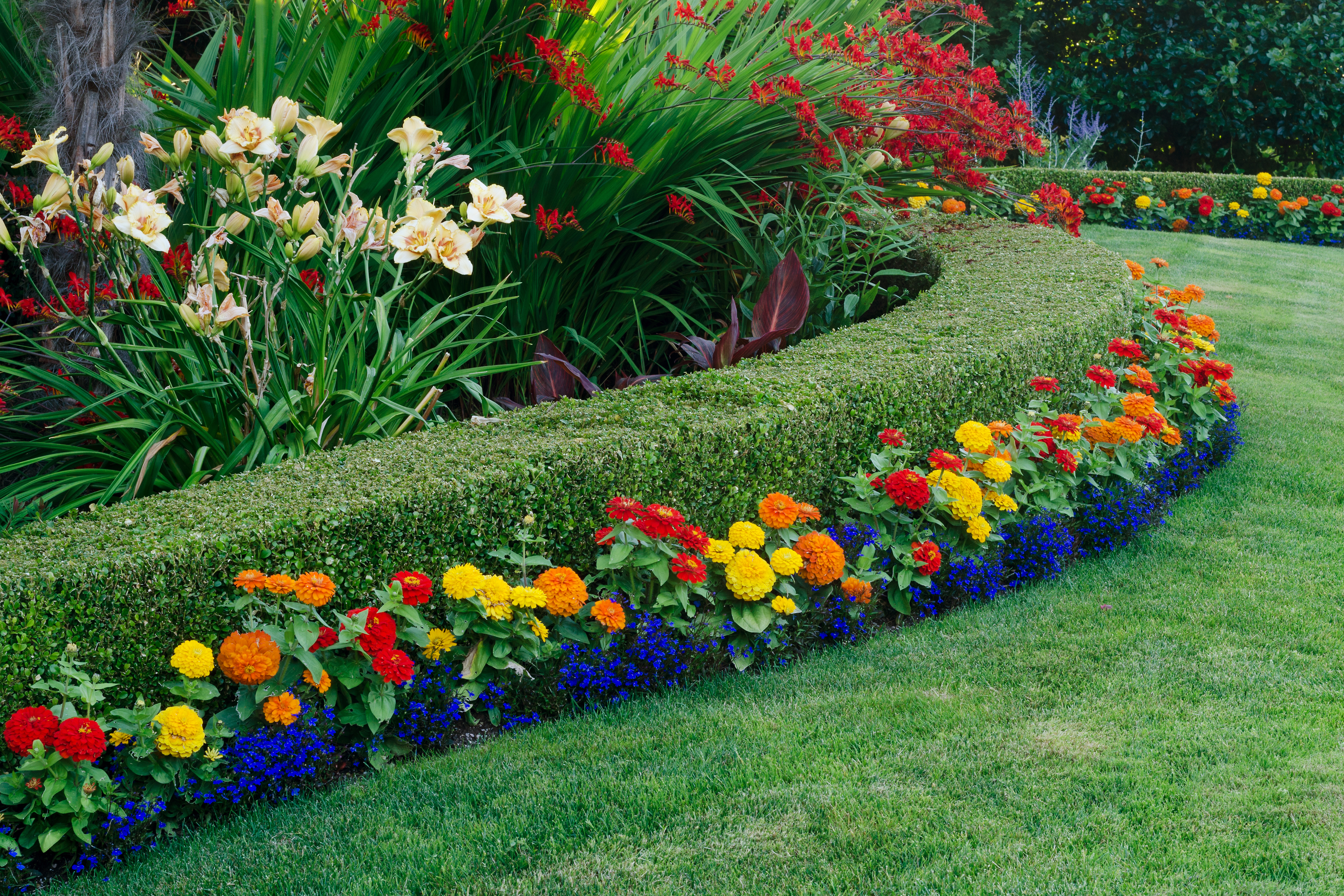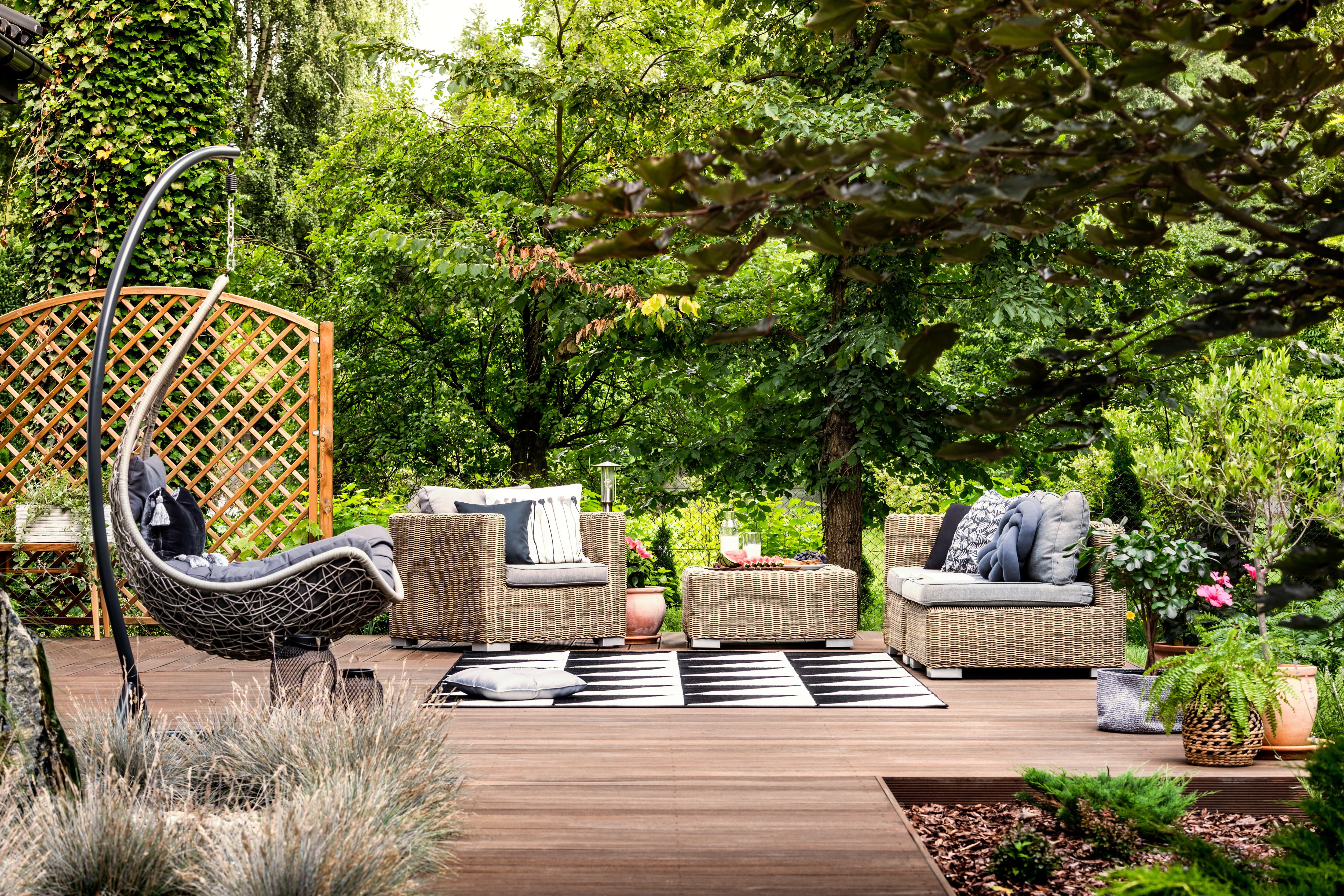
Landscaping: An Art and Science
Landscaping, a term that often conjures images of lush gardens and neatly trimmed lawns, is much more than that. It's an art and a science, blending creativity with knowledge of horticulture to transform outdoor spaces. Whether it's a tranquil backyard or a commercial property, landscaping plays a crucial role in shaping the environment around us.
Understanding Landscaping
At its core, landscaping involves the design, planning, and management of outdoor spaces. This includes a range of activities from planting gardens to constructing features like patios and pathways. Landscaping is not just about aesthetics; it's also about creating functional, sustainable environments.
The Role of Plants in Landscaping
Plants, ranging from roses to bamboo, are the backbone of any landscape design. They bring color, texture, and life to gardens and lawns. Each plant, whether it's a delicate lavender or a sturdy maple, has its unique requirements and contributes differently to the landscape.
Garden Styles: Diversity and Beauty
Gardens can be designed in numerous styles, such as the serene Japanese gardens or the wild charm of English cottage gardens. Each style, like the water-conserving Xeriscape or the formal symmetry of French gardens, reflects different aesthetics and functional purposes.
Lawns: More Than Just Grass
Lawns are often seen as simple green spaces, but there's a lot more to them. Different grass types, like Bermuda or Fescue, have unique characteristics and care requirements. A well-maintained lawn, like the iconic Wimbledon Tennis Courts, can significantly enhance a property's appeal.
Hardscape Features: The Backbone of Landscape Design
Hardscapes are the non-living elements in landscaping, such as pathways and retaining walls. They provide structure and define spaces within the landscape. From functional fire pits to decorative sculptures, hardscapes add depth and character to outdoor areas.
Patios and Terraces: Versatile Outdoor Spaces
Patios, or terraces, are versatile outdoor spaces that can be used for dining, relaxation, or entertainment. Materials like stone or pavers determine their look and functionality. Famous examples include the Roman Pantheon Patio and St. Peter's Square.
Pathways: Guiding Through Beauty
Pathways, more than just functional walkways, guide visitors through the landscape. They can be simple, like stepping stone paths, or elaborate, like the High Line in New York. Their design and material choice play a significant role in the overall landscape aesthetics.
Water Features: Adding Elegance and Tranquility
Water features, from small bird fountains to grand structures like the Trevi Fountain, add a sense of tranquility and elegance to landscapes. They can be focal points or subtle additions, creating soothing soundscapes and attracting wildlife.
Gardens and Water: A Harmonious Blend
Incorporating water features into gardens, like ponds or reflecting pools, creates a harmonious blend of elements. They add visual interest and can support a diverse ecosystem, contributing to the garden's health and beauty.
Lighting in Landscaping: Illuminating Beauty
Proper lighting is crucial in landscaping. It enhances the beauty of the space, ensures safety, and extends usability into the evening. Options range from path lights for walkways to dramatic spotlights highlighting key features.
The Impact of Lighting on Nightscapes
Lighting transforms gardens and lawns at night, creating entirely new landscapes. It highlights textures and colors, and when used creatively, can turn an ordinary garden into a magical night-time haven.
The Art of Shrubbery in Landscaping
Shrubbery, like boxwood or azaleas, is essential in landscaping for creating structure and adding depth. They can be shaped artistically, provide privacy, and add seasonal color through their flowers and foliage.
Balancing Softscape and Hardscape
A well-designed landscape balances softscape (plants, lawns, gardens) with hardscape (patios, pathways). This balance is key to creating a cohesive, functional, and aesthetically pleasing outdoor space.

Landscaping for Environmental Sustainability
Sustainable landscaping focuses on creating eco-friendly and resource-efficient spaces. This involves using native plants, conserving water, and choosing sustainable materials, thereby reducing the environmental impact.
Landscaping and Wildlife: Creating Habitats
A landscape can be a haven for wildlife, offering food, shelter, and water. Designing with this in mind, such as incorporating pollinator-friendly gardens, supports local ecosystems and biodiversity.
Zoning and Permitting: Navigating Legal Landscaping Boundaries
Zoning and permitting are critical aspects of landscaping, especially in urban and suburban environments. They involve understanding and adhering to local regulations regarding land use, which can impact everything from the types of plants you can grow to the construction of outdoor structures.
Key Aspects of Zoning and Permitting in Landscaping
Navigating zoning and permitting involves:
- Understanding Local Regulations: Familiarizing oneself with local zoning laws, which dictate land use and landscaping rules.
- Permit Acquisition: Obtaining necessary permits for certain landscaping projects, like building a deck or installing a large water feature.
- Compliance with Environmental Regulations: Ensuring landscaping practices comply with environmental protection laws, particularly regarding water usage and soil pollution.
- Working with Urban Planning Guidelines: Aligning landscaping projects with broader urban planning initiatives, such as green space development or urban renewal projects.
Cultural Significance of Gardens and Landscapes
Gardens and landscapes often reflect cultural influences. For example, Zen gardens embody tranquility and mindfulness, while Italian Renaissance gardens showcase symmetry and grandeur. Each style tells a story and connects us to different traditions and histories.
Landscaping as an Expression of Culture
Landscaping is not just about aesthetics; it's a form of cultural expression. From the sacred geometry of Islamic gardens to the natural simplicity of Native American medicine wheels, landscapes can represent philosophical ideas, religious beliefs, and cultural values.
Technological Advancements in Landscaping
Modern landscaping is embracing technology. Automated irrigation systems, solar lighting, and smart gardening sensors are becoming integral parts of contemporary landscape design, making maintenance more efficient and eco-friendly.
The Role of Technology in Sustainable Landscaping
Technology in landscaping can significantly enhance sustainability. For instance, smart irrigation systems conserve water, while eco-friendly power sources reduce the carbon footprint of landscape maintenance.
Landscaping for Different Seasons
Landscaping is not static; it changes with the seasons. Seasonal variations, from spring blooms to winter interest, are essential considerations in landscape design. This includes choosing plants that provide year-round interest and adapting maintenance practices seasonally.
Embracing Seasonality in Garden Design: Adapting to Nature's Rhythms
Seasonality is a fundamental aspect of garden design, reflecting the cyclical changes in nature. A well-planned garden not only celebrates the beauty of each season but also anticipates and prepares for the unique challenges and opportunities they bring. By embracing seasonality, gardeners and landscapers can create outdoor spaces that are not only visually stunning year-round but also sustainable and in harmony with the local environment.
Spring: Awakening and Renewal
In spring, the focus is on planting and nurturing new growth. This is the time for:
- Planting Annuals and Perennials: Choosing species that will bloom in the coming months.
- Lawn Care: Reseeding and fertilizing lawns to encourage lush, healthy growth.
- Pruning: Trimming dormant trees and shrubs to promote healthy development.
- Pest Prevention: Implementing early treatments for pests like the Emerald Ash Borer (EAB), which can be particularly harmful to ash trees in spring.
Summer: Maintenance and Enjoyment
Summer is the peak season for garden vibrancy and activity. Key tasks include:
- Irrigation: Implementing efficient watering practices to cope with the heat, especially in arid climates.
- Weed Control: Regularly removing weeds to prevent them from competing with desired plants for nutrients.
- Pest Management: Continuously monitoring and treating for pests and diseases that are prevalent in warmer months.
- Enjoying the Landscape: Designing areas for relaxation and entertainment, such as patios or outdoor kitchens, to make the most of the summer weather.
Autumn: Preparation and Transition
Autumn is a time of preparation for the colder months ahead. Important activities involve:
- Planting for Spring: Sowing bulbs and certain perennials that will bloom in the spring.
- Soil Improvement: Adding compost or mulch to enrich and protect the soil.
- Leaf Removal: Regularly clearing fallen leaves to keep lawns healthy and prevent mold growth.
- Preparing for Frost: Protecting sensitive plants from early frosts and adjusting the watering schedule as temperatures drop.
Winter: Rest and Planning
In winter, the garden rests, but there are still critical tasks to be undertaken:
- Snow Removal: Clearing snow from paths, driveways, and around plants to prevent damage and ensure safety.
- Winter Pruning: Pruning certain trees and shrubs when they are dormant to encourage better growth in the spring.
- Protection from Cold: Applying burlap or other protective materials to shield vulnerable plants from harsh conditions.
- Planning for the Next Season: Reviewing the past year’s successes and challenges to plan for the upcoming gardening season.
Adapting Services to Seasonal Needs
Professional landscaping services adapt to these seasonal changes, offering specific services tailored to the time of year. For example:
- Spring Services: Aeration, fertilization, and pest treatment services are critical in spring to prepare gardens for the growing season.
- Summer Services: Regular lawn mowing, irrigation maintenance, and landscape lighting installations are popular in the summer.
- Autumn Services: Leaf removal, soil testing, and tree planting are essential services in the fall.
- Winter Services: Snow removal, holiday lighting installation, and winter pruning are key winter landscaping activities.
Common Misconceptions in Landscaping: Demystifying Gardening Myths
Landscaping, like any field, is rife with misconceptions that can lead to ineffective or even harmful practices. Understanding and debunking these myths is essential for anyone looking to create and maintain a healthy and sustainable outdoor space.
Misconception 1: One-Size-Fits-All Plant Choices
One common myth is that all plants can thrive in any garden setting. In reality, plant success depends on a variety of factors, including climate zones, soil quality, sun exposure, and regional pests. For instance, a plant that thrives in the humid Southeastern U.S. may struggle in the dry Southwest. Choosing native or region-appropriate plants is crucial for a thriving garden.
Misconception 2: High Water Use in Lawn Maintenance
Another widespread belief is that all lawns require significant amounts of water to stay green and healthy. However, there are many drought-tolerant grass varieties, such as Zoysia or Bermuda, that can maintain a lush appearance with minimal watering. Techniques like xeriscaping and choosing native ground covers can also reduce a lawn's water requirements.
Misconception 3: More Fertilizer Means Better Growth
The idea that heavy fertilization leads to better plant growth is another myth. Over-fertilization can harm plants, leading to excessive growth, weakened defenses against pests, and damage to the surrounding environment due to runoff. Understanding the specific nutrient needs of your landscape and using fertilizers responsibly is key.
Misconception 4: Landscaping Doesn't Affect Biodiversity
Some believe that landscaping has little impact on local wildlife and biodiversity. Contrarily, the choices made in landscaping can significantly influence local ecosystems. Using a variety of plants, including those that provide food and habitat for native wildlife, and avoiding invasive species, can greatly support biodiversity.
Misconception 5: Synthetic Pesticides are the Only Solution to Pests
The reliance on synthetic pesticides as the sole solution for pest problems is a misconception. Organic and integrated pest management strategies can be equally, if not more, effective. These methods include using natural predators, mechanical barriers, and selective organic herbicides and pesticides.
Misconception 6: Immediate Results are Expected in Landscaping
Expecting immediate results is a common landscaping error. Landscaping is an ongoing process, and many aspects, like the growth of trees and the establishment of gardens, take time. Patience and consistent care are often required to see the desired outcomes.
Misconception 7: Landscaping is Only About Aesthetics
While aesthetics are a significant aspect of landscaping, it's not just about how the space looks. Good landscaping considers functionality, environmental impact, and personal well-being. It can improve air quality, provide a habitat for wildlife, and create a space for relaxation and recreation.
Misconception 8: Patios Can Only Be Made from Concrete or Stone
A prevalent misconception is that patios must be constructed from traditional materials like concrete or stone. However, the range of materials available for patio construction is much broader and includes options like pavers, bricks, wood, tiles, and even eco-friendly materials like recycled plastic and rubber. Each material offers different aesthetics, maintenance requirements, and environmental impacts. For instance, permeable pavers allow for better water drainage and reduce runoff, while wood can provide a natural, warm appearance but may require more maintenance.
Misconception 9: Landscaping Has Little Impact on Property Value
Another common myth is that landscaping is purely a cosmetic upgrade and doesn't significantly impact property value. In reality, well-designed and maintained landscaping can substantially increase a property's value and curb appeal. According to various studies, good landscaping can add up to 15-20% to a home's value. Features like mature trees, well-maintained lawns, and functional outdoor spaces like patios and decks are particularly valued. Additionally, sustainable landscaping features, such as drought-tolerant plants and efficient irrigation systems, are increasingly becoming selling points in many markets.

Landscaping: A Blend of Art and Science
In conclusion, landscaping is a dynamic field that blends artistic creativity with scientific knowledge. It's about more than just aesthetics; it's about creating functional, sustainable, and culturally significant spaces that enhance our environment and our lives.
The Essence of Landscaping: Beyond Aesthetics
Landscaping encompasses much more than just creating visually appealing spaces. It involves a deep understanding of living elements, the interaction between flora and fauna, and the art of gardening. This dynamic field combines the beauty of landscape with practical aspects of landforms and terrain.
The Role of Water in Landscaping
Water, a crucial element in landscaping, comes in various forms – from bodies of water like ponds and streams to rain gardens. Understanding how water interacts with different elements in a landscape is key for successful design and sustainability.
Weather and Its Impact on Landscaping
Weather patterns significantly influence landscaping choices. Factors like regional climate, frost line, and precipitation dictate the type of flora that can thrive and the landscaping techniques suitable for an area.
Climate Zones in the US: Understanding Regional Landscaping Needs
The United States is characterized by a diversity of climate zones, each with unique landscaping needs and challenges. From the humid subtropical climate of the Southeast to the arid deserts of the Southwest, understanding these zones is crucial for effective and sustainable landscaping.
Tailoring Landscaping to Climate Zones
Considerations for different climate zones include:
- Plant Selection: Choosing native flora and fauna adapted to local climate conditions.
- Water Management: Implementing efficient irrigation in arid zones and drainage systems in wetter areas.
- Soil Adaptation: Understanding regional soil qualities and amending as needed for plant health.
- Seasonal Variations: Planning for seasonal changes in weather, such as frost line considerations in colder regions or heat tolerance in warmer areas.
Horticulture and Landscaping: A Synergetic Relationship
Horticulture, the science and art of growing plants, is integral to landscaping. It involves knowledge of plant species, soil qualities, and cultivation techniques, ensuring that gardens are both beautiful and sustainable.
The Importance of Topography in Landscaping
Topography, or the arrangement of the natural and artificial physical features of an area, plays a crucial role in landscaping. It determines aspects like drainage and the types of plants suitable for a region.
Advanced Landscaping Techniques and Specializations
Landscaping encompasses various specializations, each contributing uniquely to the field. For instance, Aquascaping focuses on arranging aquatic plants and rocks in aesthetically pleasing ways, while Arboriculture deals with the care of trees.
Ecoscaping: A Sustainable Approach
Ecoscaping, a method of landscaping that aims to create environmentally sustainable designs, is gaining popularity. It incorporates native flora and sustainable practices to create landscapes that are in harmony with the local ecosystem.
Landscape Engineering and Architecture
Landscape engineering and architecture are specialized fields that blend design skills with knowledge of the environment. These disciplines focus on planning and creating landscapes that are not only beautiful but also functional and sustainable.
Landscape Archaeology: Unearthing the Past in Our Present Landscapes
Landscape archaeology is a fascinating field that combines elements of archaeology, history, and geography to study how past human activities have shaped the present landscape. It involves examining the physical remnants of past societies, such as buildings, roads, and fields, and interpreting how these elements influenced and were influenced by the cultural, social, and economic practices of their time.
Exploring Historical Landscapes
Key aspects of landscape archaeology include:
- Historical Land Use: Investigating how past societies used the land, from agriculture to city planning.
- Ancient Landforms: Studying terrain features shaped by human activity, such as terraces or irrigation channels.
- Cultural Artifacts: Analyzing objects found in the landscape to gain insights into past life and traditions.
- Environmental Impact: Understanding how historical land use has impacted the environment, contributing to soil qualities, changes in landforms, and even climate patterns.
Sustainable Landscaping: Environmentally Responsible Design
Sustainable landscaping is an approach that seeks to create aesthetically pleasing outdoor spaces while minimizing environmental impact. This method focuses on the efficient use of resources, such as water and energy, and the reduction of waste and pollution. Sustainable landscaping involves using eco-friendly materials, implementing organic lawn management practices, and designing with a keen awareness of the local climate and topography.
Strategies for Sustainable Landscaping
Key strategies in sustainable landscaping include:
- Water Conservation: Utilizing drought-resistant plants and efficient irrigation systems like drip irrigation to reduce water consumption.
- Soil Health: Maintaining healthy soil through natural means, such as composting and mulching, to enhance fertility and water retention.
- Energy Efficiency: Incorporating solar-powered lighting and automated systems that reduce energy use.
- Reducing Chemical Use: Minimizing the use of synthetic fertilizers and pesticides, opting for organic and natural alternatives.
Organic Lawn Management: A Natural Approach to Lawn Care
Organic lawn management is a holistic approach to maintaining lawns without the use of synthetic chemicals. It focuses on natural processes and organic materials to nurture lawn health, promoting a sustainable ecosystem in your backyard. Organic lawn management considers factors like soil qualities, grass type, and the local environment to create a healthy, resilient lawn.
Techniques in Organic Lawn Management
Effective organic lawn management techniques include:
- Natural Fertilizers: Using compost and other organic matter to enrich the soil.
- Pest Control: Employing natural methods, such as beneficial insects and biological pest control, to manage lawn pests.
- Grass Cycling: Leaving grass clippings on the lawn after mowing to return nutrients to the soil.
- Aeration and Overseeding: Regularly aerating the lawn to improve oxygen and water flow to the roots and overseeding to promote dense, healthy grass growth.
- Water Management: Watering lawns efficiently and at optimal times to reduce water use and encourage deep root growth.
By implementing these practices, organic lawn management not only maintains a beautiful lawn but also contributes to a healthier, more sustainable environment.
Naturescaping: Working with Nature
Naturescaping is about designing landscapes that use native plants and natural processes to create a harmonious and low-maintenance environment. This approach encourages biodiversity and reduces the need for artificial inputs.
The Challenges of Land Development and Conversion
Landscaping is deeply intertwined with land development and conversion. Sustainable land management practices are crucial to mitigate issues like land consumption, land loss, and habitat destruction.
Landscape Ecology: Harmonizing Nature and Design
Landscape ecology plays a pivotal role in modern landscaping. It's the science of understanding and designing landscapes in a way that respects and leverages the natural patterns and processes of ecosystems. Landscape ecology emphasizes the relationship between different ecosystem components, such as landforms, bodies of water, native flora and fauna, and human-made structures. It focuses on preserving biodiversity, promoting connectivity between habitats, and maintaining ecological balance. By integrating these principles, landscape designs can contribute positively to environmental health, support wildlife habitats, and create sustainable outdoor spaces.
Principles of Landscape Ecology in Practice
Incorporating landscape ecology into landscaping involves several key principles:
- Conserving Natural Areas: Protecting and incorporating existing natural areas, such as forests, wetlands, and prairies.
- Habitat Connectivity: Designing landscapes that allow for wildlife movement and ecological flow between areas.
- Use of Native Species: Emphasizing native plants which are adapted to local conditions and support native wildlife.
- Water Management: Implementing features like rain gardens and bioswales for effective water drainage and filtration, reducing soil erosion and pollution runoff.
Addressing Soil and Pollution in Landscaping
Soil science, including aspects like soil compaction and soil pollution, is vital in landscaping. Understanding soil properties helps in choosing the right plants and maintaining healthy landscapes, especially in urban settings.
Urban Landscaping: Planning and Renewal
Urban planning and urban renewal are key aspects of landscaping in city environments. They involve designing green spaces that provide respite from urban stress, improve air quality, and enhance the quality of life for city dwellers.
Landscaping and Agriculture: A Collaborative Approach
Incorporating concepts from agriculture, like permaculture and sustainable agriculture, into landscaping can create productive and environmentally friendly spaces. Techniques like drainage systems in agriculture are often adapted for residential and commercial landscaping.
Land Change Modeling: Predicting Future Landscapes
Land change modeling is an advanced technique used to predict and analyze changes in landscapes over time. It combines data from various sources, including climate patterns, land use, and urban planning, to forecast how landscapes will evolve. This tool is invaluable for urban planners, environmentalists, and policymakers, helping them make informed decisions about land management and sustainable development.
The Process of Modeling Landscape Changes
Land change modeling involves:
- Data Collection: Gathering information on current land use, soil science, climate data, and historical land changes.
- Predictive Analysis: Using computer models to project future changes in the landscape based on various scenarios.
- Impact Assessment: Evaluating the potential effects of land changes on the environment, such as habitat loss or changes in biodiversity.
- Planning and Management: Informing sustainable land management and urban renewal strategies based on model predictions.


